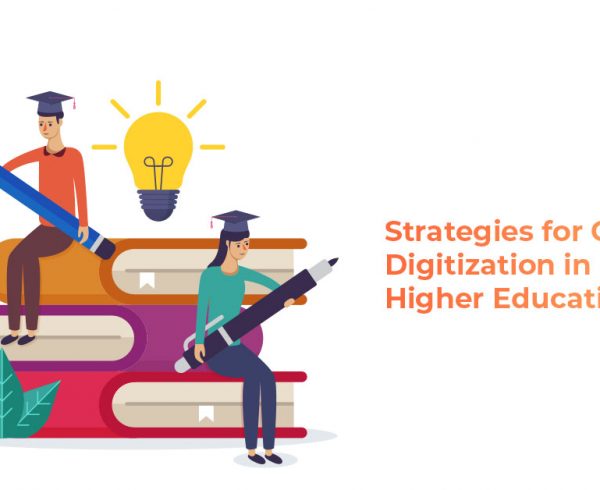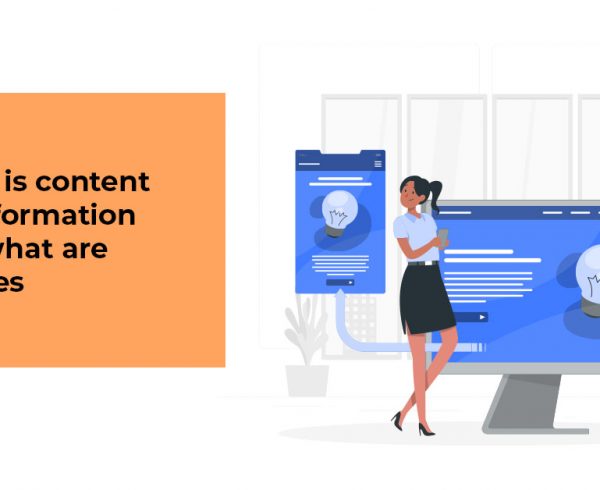Think back to the last time you took a training that you loved. They gave you these amazing handouts that you felt would change the way you work, increase your efficiency, give you leadership skills, and help with organizing your work life. Then, a month later, you wanted to share it with your team. But the papers were missing, the notes you took no longer made sense, and the consultant you hired for the training wasn’t reachable. If this has ever happened to you, then your company is in dire need of content digitization and content transformation.
Table of Contents:
Why is Content Digitization Important?
Binders, folders, and emails were great a decade ago. Now, due to advanced content digitization, there exists a wealth of options when it comes to presenting and accessing your content better. Content transformation is changing the way business is carried out. So, don’t let outdated technology hold your company back. Adopting a content digitization process will help you streamline your processes and keep all data and information in an organized manner.
1. Measure Data
Digitizing your processes can give you actionable data. You can track how employees are reacting to learning programs and thus evaluate their learning curves. You can use this data to spot employees who have not been able to grasp the module and help them reach their full potential. You can also spot your star employees and fast-track them to senior positions.
2. Anytime Access
By making your content responsive, web-friendly, and mobile-friendly, you give employees across different locations the ability to access training programs. If you are a start-up and don’t have many branches, it still applies to you. As your company grows and new people join in, these digitized training modules will come in handy.
3. Revisit Content
With digitized learning, your programs are always available to you. If you need to retrain, strategize, or get newer team members up to speed, your content is just a few clicks away. You can also increase the flexibility of training programs which are usually wrought with calendar scheduling issues. If your employees want to train alone, they can define their own learning journey.
4. Updated Content
Once you have a Learning Management System, you will be able to access a lot of external educational content. Most new training programs are digital-first and you will always be apprised of the latest developments this way. Here’s more on how to select the right LMS vendor

Role of Content Transformation and Content Digitization in Business Growth
Businesses often need more than just good reasons to start an overhaul of old methods. Content transformation also affects your bottom line. It saves your employees a lot of time so they can concentrate on delivering better output. It also brings the best out of your employees by allowing them access to learning material they might not have had before. It avoids confusion, and finally, it’s great for the environment.
Content digitization processes, once completed, will save you a lot of money. Once your content is created, you don’t even need classroom training sessions. If your employees are distributed across locations, the training becomes tedious and expensive. When people can access lessons at their own pace, booking expensive consultants every time a new employee joins will not be necessary anymore. Content transformation through a systematic content digitization process is not just about learning, it also streamlines the day-today operations of your business. More on Digital training vs Instructor-led training
Digitizing your processes lets you organize, update, reuse, change, and distribute your content faster. When learners don’t need to wait for everyone’s calendars to align, it helps them learn faster and at their own pace.
Content transformation drives innovation. By keeping training modules easily accessible, you allow employees to learn something new, and upgrade their knowledge, thus driving innovation. Lateral movement has shown to be beneficial in companies – it reduces attrition, keeps your best employees interested by offering them new things to do.
Standardize your company’s guidelines by using digital content systems. By having a centralized source of data, you ensure that the managers have all the updated records and information, reducing the probability of acting upon incorrect information or miscommunication.
Today, every organization is obliged to take its corporate social responsibility seriously. Think about the amount of paper you waste through print outs on a daily basis. Adopting a content digitization process is a step towards reducing that waste
How to Digitize Learning Content
Once you have made up your mind about content transformation, your first step would be to find the best content digitization processes. You could start with a good Learning Management System (LMS). An LMS keeps all the information under one accessible system. It helps you track and make changes to training modules.
After you identify a good LMS, you need to map out your curriculum. Figure out how you want to design these new learning strategies. For example, if there are certain steps that need to be followed for a particular process, you need to present them in a way which your employees will understand and remember. You can use innovative ways to present your concepts, such as infographics, videos, simulations etc.
You will also need to figure out how you want to present your content. It’s not enough to scan pages and digitize your modules; you also need to make them technology-friendly. Using a mobile-based content delivery software you can deliver the content on laptops as well as smartphones, since mobile-based learning is the new trend in employee training. Here’s more on how you can use Mobile learning in training
To Sum It Up
Content Digitization process will help your business grow. So, spend some time thinking about how you would like to present your content because digitization offers many innovative ways of presenting learning modules. Enterprises across the world are going in for content digitization of their content because it eases their work, organizes data, and helps in the smooth functioning of the business.
Related Article – Strategies for Content Digitization in Higher Education










